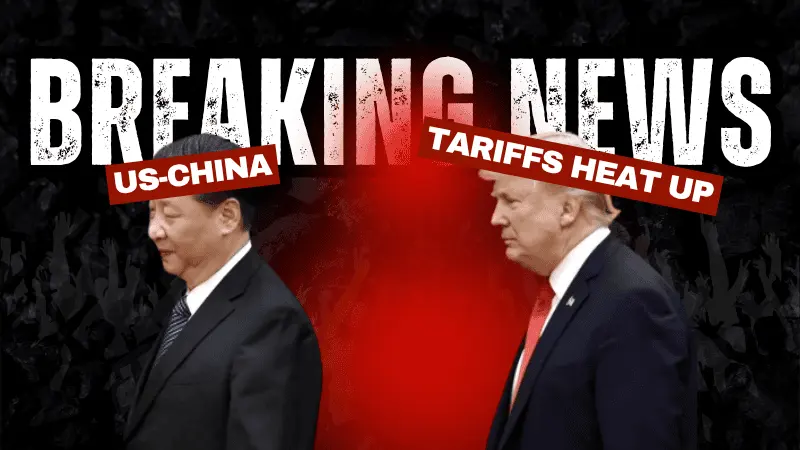简体中文
繁體中文
English
Pусский
日本語
ภาษาไทย
Tiếng Việt
Bahasa Indonesia
Español
हिन्दी
Filippiiniläinen
Français
Deutsch
Português
Türkçe
한국어
العربية
ECB Set to Cut Rates, But Future Path Uncertain Amid Global Tensions
Abstract:- ECB expected to cut interest rates on March 6 - Future rate decisions unclear due to ongoing inflation and global trade issues - Markets expect more cuts, but some ECB officials urge caution
Key Points:
- ECB expected to cut interest rates on March 6
- Future rate decisions unclear due to ongoing inflation and global trade issues
- Markets expect more cuts, but some ECB officials urge caution
- Eurozone economy not growing, raising worries about slow growth and high prices
The European Central Bank (ECB) is about to lower interest rates for the first time in 2025. Markets widely expect a 0.25% cut at the upcoming meeting on March 6. However, the future direction of monetary policy is not clear. Policymakers are dealing with ongoing inflation, weak economic growth, and increasing global trade tensions.
ECB Rate Cut Expected Amid Economic Stagnation
The ECB is likely to reduce its key deposit rate from 2.75% to 2.50% on Thursday. This marks the start of an easing cycle to boost the struggling eurozone economy. Recent economic data supports the need for lower rates. The eurozone showed no growth in the last quarter of 2024, and manufacturing remains weak.
Michael Field from Morningstar commented on the situation. He said economists all predict a 0.25% cut by the ECB next week. Field believes this move would be good for European stock markets, which he thinks are still undervalued.
Persistent Inflation Complicates Policy Decisions
The ECB faces challenges from ongoing inflation pressures. This makes it harder to loosen monetary policy. Service sector inflation is a particular worry. Prices in this area are rising at their fastest pace in ten months, according to recent data.
This sticky inflation creates a problem for the central bank. The ECB must balance its goal of stable prices with growing concerns about economic stagnation. Achieving the ECB's 2% inflation target consistently remains difficult in the current environment.
Market Expectations and Internal Debate
Traders expect more rate cuts throughout 2025. Current market pricing suggests the deposit rate could reach between 1.75% and 2.00% by year-end. This reflects expectations of continued economic challenges.
However, there are different views within the ECB on the best monetary policy strategy. Some officials want a more careful approach to lowering rates. They stress the need to carefully assess economic data before making decisions.
Belgian Central Bank Governor Pierre Wunsch has been particularly outspoken. He warned against “sleepwalking” into too many rate cuts. Wunsch is concerned that lowering rates too quickly or too much could limit the ECB's options if economic conditions change unexpectedly.
Global Trade Tensions Add Uncertainty
Rising global trade tensions make the ECB's decisions even more complicated. The threat of new tariffs from the United States is a particular concern. These potential trade restrictions could affect European exports and inflation, adding more uncertainty to the economic outlook.
Martin Wolburg from Generali Investments shared his thoughts on the situation. He expects updated inflation projections to support the view that inflation is heading back to target. Wolburg also sees potential for lower growth forecasts. While this would support further rate cuts, he notes that some ECB members have recently suggested that the direction of future rate changes is less clear.
Implications for Markets and Investors
The ECB's shift towards lower rates has already affected the euro. The currency has weakened against major currencies like the dollar. Currency traders are closely watching ECB statements for clues about future rate decisions, as these will likely drive currency movements.
European stocks have shown mixed reactions to the expected rate cuts. Lower borrowing costs generally support stock prices. However, concerns about economic growth have limited enthusiasm, especially for companies that depend heavily on eurozone consumers.
Bond markets have responded more clearly to the expected rate cuts. Yields on government debt across the eurozone have fallen as investors anticipate continued monetary easing. The difference between European and US bond yields has grown wider, reflecting different expectations for monetary policy in these regions.
Conclusion
The ECB faces a difficult task as it starts to lower interest rates. Policymakers must balance boosting the economy with keeping prices stable. The central bank's decisions in the coming months will be crucial for the eurozone's economic future. These choices will also significantly impact investors across various types of assets.
Global trade tensions, ongoing inflation, and weak economic growth all factor into the ECB's decisions. Market participants will be watching closely for any hints about future monetary policy beyond the expected March rate cut.

Disclaimer:
The views in this article only represent the author's personal views, and do not constitute investment advice on this platform. This platform does not guarantee the accuracy, completeness and timeliness of the information in the article, and will not be liable for any loss caused by the use of or reliance on the information in the article.
Read more

Amillex Broker Login and Account Setup Guide 2025
You are here because you need clear instructions for the Amillex Broker login process or want to open a new Amillex Broker account. This guide is your complete resource. We provide a direct, step-by-step walkthrough for both new and existing traders. Our goal is to give you the exact information needed to access your account or get started with the platform safely and confidently. This complete manual covers everything from your first login to using your user dashboard and even setting up a practice account.

Top Tips to Avoid Forex Margin Calls and Protect Your Capital
While technical indicators or chart patterns often capture the attention of forex traders, especially new ones, aspects such as margin requirements, equity, used margin, free margin, and margin levels are often overlooked. So, if you have received a margin call from your forex broker and are wondering how to deal with it, you probably do not know the concept of a forex margin call - what triggers it and how to avoid it. Being unaware of this concept can make you lose your hard-earned capital. In this article, we will provide you with all the information you need to know. Keep reading!

A Guide to Determining the Optimum Forex Leverage
Want to gain a wider forex market position control by investing a minimal amount? Consider using leverage in forex. It implies using borrowed funds to raise your trading position more than your cash balance can let you do it. Forex traders usually employ leverage to churn out profits from relatively small currency pair price changes. However, there is a double-edged sword with leverage since it can multiply profits as well as losses. Therefore, using leverage in the right amount is key for traders. Forex market leverage can be 50:1 to 100:1 or more, which remains significantly greater than the 2: leverage usually offered in equities and 15:1 leverage in futures.

US-China Tariffs Heat Up—Pause Still Possible, Says Bessent
President Trump signaled the U.S. and China are effectively in a trade war, even as Treasury Secretary Scott Bessent left room to extend a current tariff pause and a Trump–Xi meeting remains on the calendar. After floating a new 100% tariff on Chinese goods from Nov. 1, tensions seesawed amid Chinese sanctions and U.S. threats over soybeans. Some U.S. tariffs (up to ~145%) are paused until Nov. 10, with a Supreme Court test of “reciprocal” tariffs looming. Companies are adapting unevenly—Stellantis expanding in the U.S., while Apple deepens ties in China—suggesting continued market volatility.
WikiFX Broker
Latest News
MH Markets Review 2025: Trading Platforms, Pros and Cons
Octa FX in Pakistan: The Complete Guide to Local Payments, Regulation, and Support
Mekness Review: Traders Report Alleged Fund Scams & Account Blocks
INTERPOL, AFRIPOL Crack Down on Africa Terror Finance
Forex Scam Checker Philippines: Verify Brokers with WikiFX
D Prime to Exit Limassol Office Amid Doo Group Restructure
Fake Trading Platforms Are Spreading Fast Across Asia | How Investors Are Being Tricked
WikiFX Elites Club Committee Concludes Voting! Inaugural Lineup Officially Announced
eToro CopyTrader Expands to U.S. Investors
Is MH Markets Safe or a Scam? Regulation and Fund Security Explained
Currency Calculator



